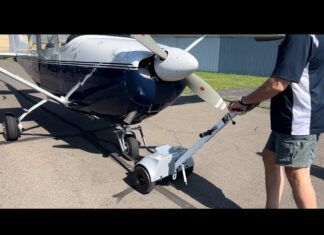In the bad old days of aircraft maintenance, it wasn’t uncommon for shop personnel to fly customer aircraft as part of troubleshooting and final testing. Now insurance and liability issues generally quash the idea. The hangar keepers liability insurance policy shops carry might only cover ground ops. This often results in the shop technician flying shotgun with the aircraft owner on a test flight. I have some grey hairs from years of doing just that and will forever remember one maintenance flight that went bad: Engine failure forced a landing in a cornfield, destroying the aircraft.
Crashing on a maintenance flight can be muddy because a third party (the shop) is involved. If that shop is an FAA repair station, it might have specific flight-testing guidelines and procedures written in its ops specs, which govern the conditions under which the flight is conducted. The flight can likely only be made in VFR conditions and without passengers—a common-sense practice after major maintenance
Since I’m here to write about it, I obviously survived the ordeal but walked away with a sour taste of how some FSDOs handle post-crash investigations. Since I transmitted a mayday call before the ditching, authorities—including FAA inspectors—were on the scene almost before I was. The fast crash response was great—the behavior of the inspectors wasn’t. The lead inspector inexplicably demanded that the aircraft owner climb into the inverted wreckage (buried in corn stalks and loaded with fuel) to retrieve the aircraft paperwork. And then the questions began.
Pilots are vulnerable in the hours after the drama of a crash. They need time to sort it all out. It is positively the worst time to talk with officials and it’s often where serious trouble begins. That’s because changing your story in the days after the initial interview reflects on your credibility—and your credibility is being scrutinized. It’s best to say as little as possible until you can make an accurate and truthful statement. If news reporters arrive on the scene as they did after my put-down, they’ll try to get in your face for a statement. If the reporter has limited aviation knowledge, you’ll be trying to correct inaccurate reporting forever. Even the airport manager from the airport from which we departed showed up to ask questions, even though we were 10 miles from the airfield. My response to him included something about riding in on a horse.
The next day I was contacted by no fewer than four different investigators from the FAA and NTSB—all trying to poke holes in the aircraft owner’s statement. As a technician, I was still considered a passenger, despite holding a pilot certificate. Part of the investigation was to determine what each person was doing during the emergency. Aside from snugging my seat belt, making the mayday call, hawk-eying the airspeed and opening the cabin door prior to touchdown, I was busy contemplating whether I might go to a heaven or a hell.
One regulatory lesson to learn about flying an aircraft right after maintenance is to be certain the shop has issued a maintenance release. If it hasn’t, the aircraft is technically unairworthy and you, the PIC, are responsible.
A team of investigators showed up at the shop asking for the maintenance release and a full report of the work that was accomplished.
Pilots have been killed by retrieving aircraft from shops after hours, assuming it was airworthy when in fact it was not.
A signed maintenance release is proof that the aircraft is officially airworthy, although after the thing has been all over the hangar floor, you’re a test pilot. Bottom line: A crash will add layers of regulatory complexity to the investigation.
—Larry Anglisano

